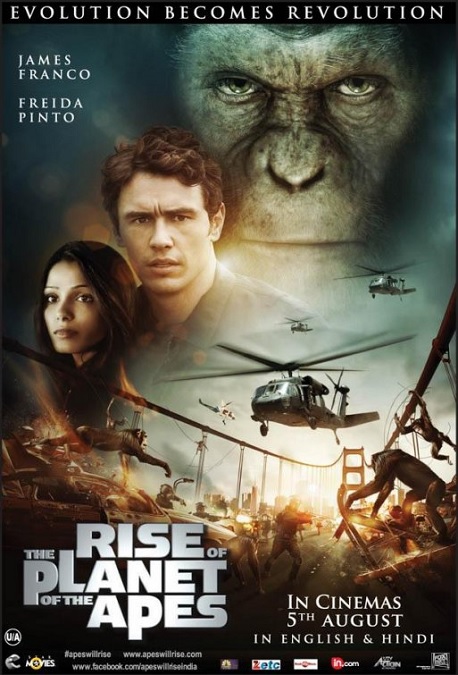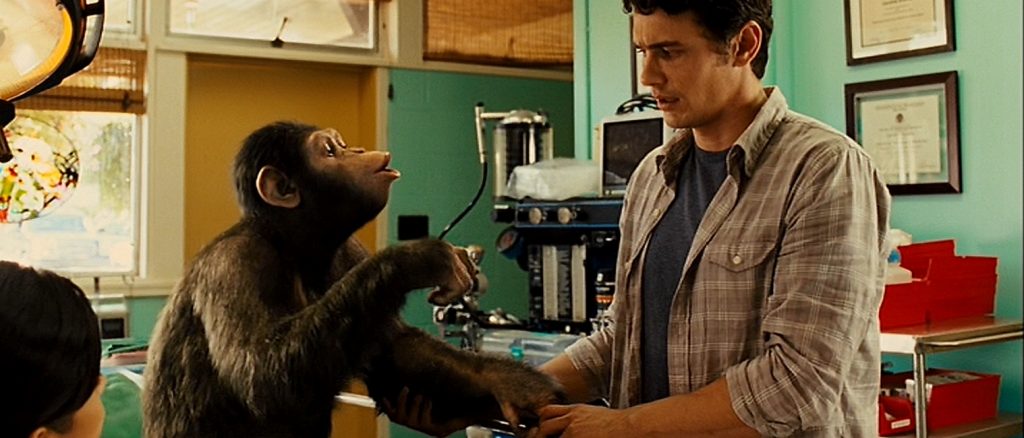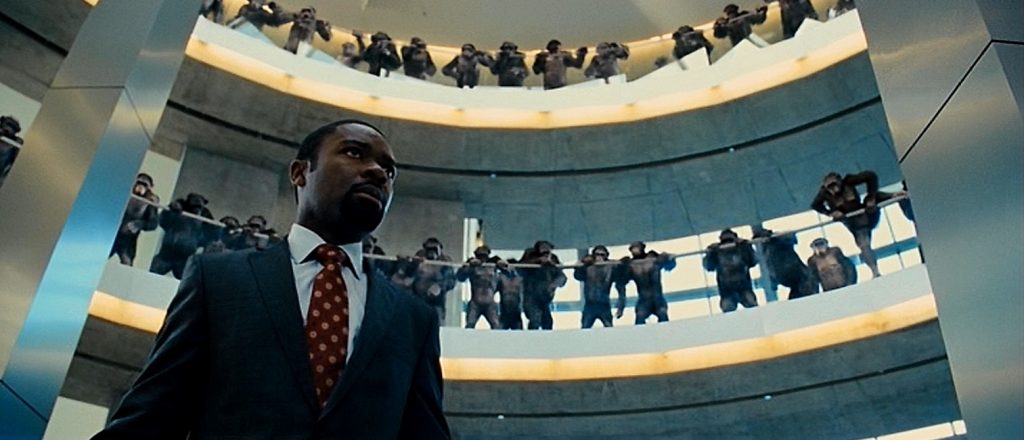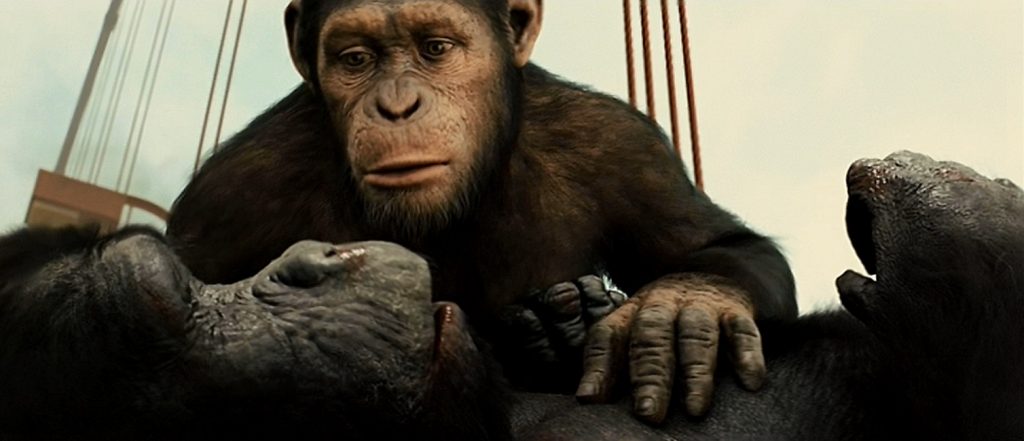



Rise of the Plante of the Apes – 2011

This movie’s visual effects were done so well that I have very few complaints. We all know what we came to see, and we got it in spades! We wanted the super-intelligent apes, but this movie went a step further, and believably showed us the progression from the countenance of a simple child, to that of a learning teenager, and finally, to a complex adult who sees the wrong being perpetrated against his species, places blame, and retaliates. And through the masterful visual effects, we got to see it all in incredible detail.
The poster child for creating believable characters by wearing a motion capture suit, Andy Serkis, played the main ape, Cesar. It seems clear that the effects artists used Peter Jackson’s King Kong as a starting point, and then elevated the technique to an even higher level. The bodies of the CGI apes looked and moved like the real things. The VFX artists had the challenge of keeping Cesar’s face looking like that of a real ape, and yet giving him facial expressions that were distinctly human. It is amazing how Serkis’ acting came through the CGI performance. Using face-capture technology, the character of Cesar was just as expressive as any of the live actors.
And there were a number of apes that had their own distinct physiologies, looks, and personalities. There were chimpanzees, gorillas, and orangutans that made up the main simian cast. They each had their own ways of moving and behaving, and the effects teams made them all unique and incredibly photo-realistic. The orangutans, with their longer hair, heavier bodies, and slower movements were quite distinct from the gorillas that were far more aggressive, muscular, and stout. At the same time, the chimps were more lithe, quicker, and nimbler than the rest, and it all came through perfectly in the nearly 100% CGI characters. Fantastic!
According to Wikipedia, “The main break through was a camera that enabled viewing the motion capture dots in daylight, employed mostly for the Golden Gate Bridge battle. A maximum of six actors could have their movements captured, with larger ape crowds using fully digital animals animated using Weta’s move library.”
Though the apes behaving like humans was the film’s main draw, there were plenty of other effects that were memorable and awesome, so I’ll just mention a few of them that caught my attention. The first one that comes to mind is when the gorilla attacks a helicopter by leaping into it, causing the pilot to lose control of the vehicle. It crashes into the Golden Gate Bridge and explodes in a giant ball of fire! The second is when the character of Jacobs is hanging on for his life in the destroyed helicopter’s cabin as Koba, a bonobo, pushes it off the bridge. The shot where it falls into the water, killing Jacobs, was awesome!
There were so many things this movie got right, and I find that I am really looking forward to seeing the two sequels, both of which were also nominated for the Best Visual Effects award in their respective years, 2014 and 2017.